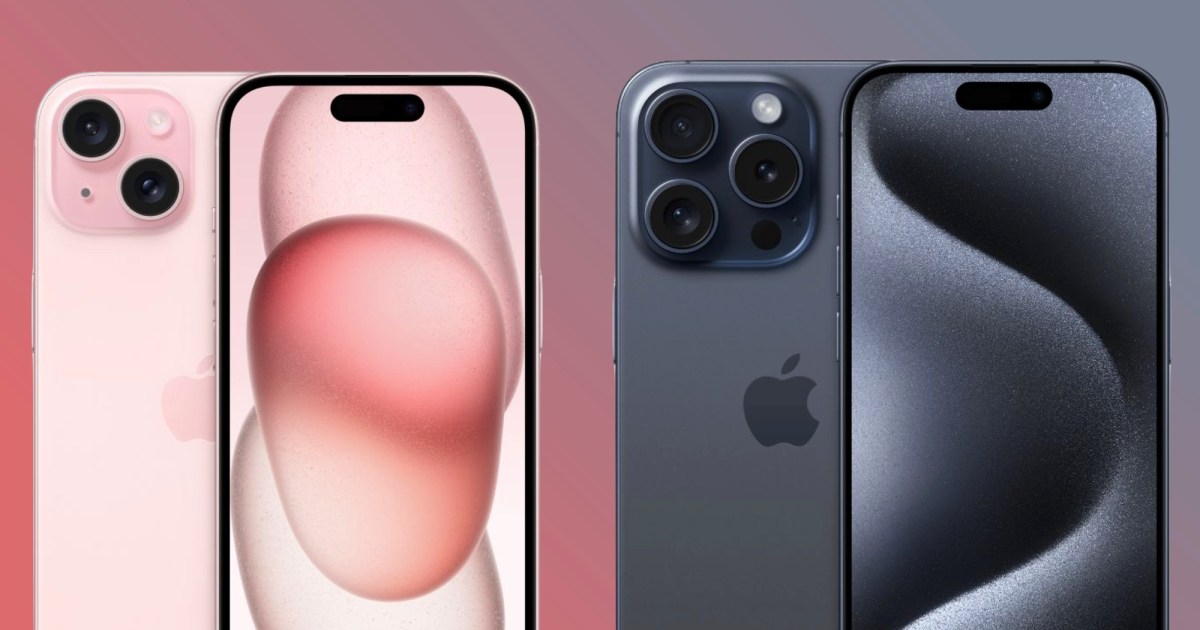Apple took the wraps off this year’s iPhone 15 lineup at its September 2023 event. The phones offer some nice design refinements and significant camera improvements across the board, plus a powerful new A17 Pro chip for the highest-end models.
However, with the usual two tiers of iPhone to choose from, we’re presented with the same dilemma every year. Does Apple’s iPhone Pro model pack in enough to justify its higher price tag, and what’s more, do you really need everything it has to offer? Or would you be better off saving some money and sticking with the standard iPhone?
The iPhone 15 lineup doesn’t change that equation in any meaningful way — we still have the classic dual-camera iPhone 15 and iPhone 15 Plus in the lower tier versus the flagship iPhone 15 Pro and iPhone 15 Pro Max powerhouses on the top end — although it does narrow the gap in at least one important area. Should you choose the sleek and expensive titanium iPhone 15 Pro or the more colorful and affordable iPhone 15? Let’s dig in and help you figure out which iPhone is the right one for you.
iPhone 15 vs. iPhone 15 Pro: specs
| iPhone 15 | iPhone 15 Pro | |
|---|---|---|
| Size | 147.6 x 71.6 x 7.8mm (5.81 x 2.82 x 0.31 inches) | 146.6 x 70.6 x 8.25mm (5.77 x 2.78 x 0.32 inches) |
| Weight | 171 grams (6.02 ounces) | 187 grams (6.60 ounces) |
| Screen | 6.1-inch Super Retina XDR OLED | 6.1-inch always-on Super Retina XDR OLED with 120Hz ProMotion |
| Screen resolution | 2556 x 1179 pixels at 460 pixels-per-inch | 2556 x 1179 pixels at 460 pixels-per-inch |
| Operating system | iOS 17 | iOS 17 |
| Storage | 128GB, 256GB, 512GB | 128GB, 256GB, 512GB, 1TB |
| MicroSD card slot | No | No |
| Tap-to-pay services | Apple Pay | Apple Pay |
| Processor | Apple A16 Bionic | Apple A17 Pro |
| Camera | Rear: 48-megapixel (MP) main camera (wide), 12MP ultrawide
Front: 12MP TrueDepth |
Rear: 48-megapixel (MP) main camera (wide), 12MP Ultrawide, 12MP telephoto, LiDAR Scanner
Front: 12MP TrueDepth |
| Video | 4K at 24/25/30/60 frames per second (fps)
1080p HD at 25/30/60 fps HDR video with Dolby Vision up to 4K at 60fps Slow motion 1080p at 120/240 fps |
4K at 24/25/30/60 frames per second (fps)
1080p HD at 25/30/60 fps HDR video with Dolby Vision up to 4K at 60fps Slow motion 1080p at 120/240 fps ProRes video recording up to 4K at 60fps with external recording Macro video recording |
| Cellular | 5G mmWave (U.S. models only) 5G (sub-6GHz), Dual eSIM with Physical SIM on non-U.S. models only. | 5G mmWave (U.S. models only) 5G (sub-6GHz), Dual eSIM with Physical SIM on non-U.S. models only. |
| Bluetooth version | Bluetooth 5.3 | Bluetooth 5.3 |
| Ports | USB-C | USB-C |
| Water resistance | IP68 | IP68 |
| Battery | Video playback: 16 to 20 hours Audio playback: 80 hours 20W fast charging |
Video playback: 20 to 23 hours Audio playback: 75 hours 20W fast charging |
| App marketplace | App Store | App Store |
| Network support | All major carriers | All major carriers |
| Colors | Blue, Pink, Yellow, Green, Black | Natural Titanium, Blue Titanium, White Titanium, Black Titanium |
| Price | Starting at $799 | Starting at $999 |
iPhone 15 vs. iPhone 15 Pro: design
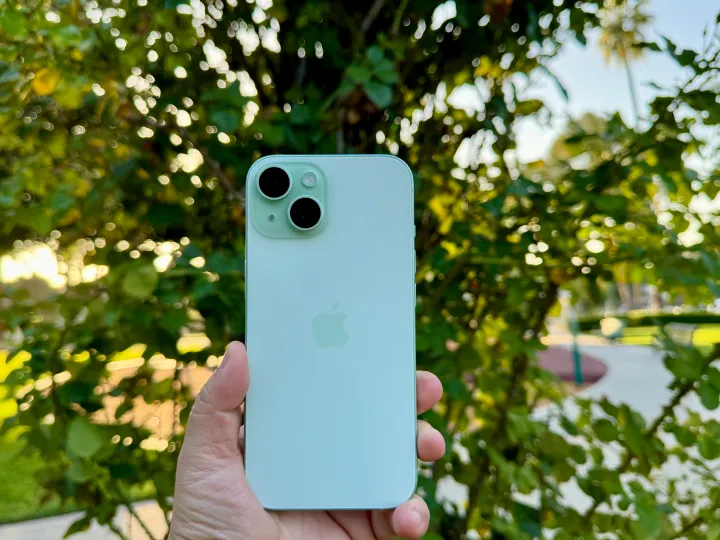
The iPhone 15 and iPhone 15 Pro both bear the same design that’s been the norm since Apple changed things up with the flat-edged iPhone 12 three years ago. However, this year, Apple has made some interesting design refinements in the materials used on both the iPhone 15 and the iPhone 15 Pro.
The flagship iPhone 15 Pro gets the most significant change, with Apple shifting from stainless steel to titanium for the outer frame. It’s a significant difference. The result is a more matte, brushed metallic look, and Apple is embracing this with a set of titanium-themed colors for this year’s Pro models: Natural Titanium is joined by Blue Titanium, White Titanium, and Black Titanium.
There’s more to this than just aesthetics, though. The iPhone 15 Pro is 19 grams lighter than its predecessor, putting it closer to the iPhone 15 in weight. This is mostly a result of the lighter weight of titanium, but Apple hasn’t given up durability here since it’s using a Grade 5 titanium alloy that it boasts is the same stuff used on the Mars rover. The result is a much more comfortable feel, as no sharp edges dig into your fingers after prolonged use.
The standard iPhone 15 retains the same aluminum and glass design, but Apple has also adopted more contoured edges here, plus a new process that infuses the back glass to create deeper and more vibrant colors. With this new matte glass, it’s very hard to see fingerprints. Still, this year’s selection leans toward the pastels in blue, pink, green, and yellow, plus the more typical black. Conspicuously missing from the lineup is a (PRODUCT)RED edition, marking the first time it’s been omitted since it appeared as a standard color for the iPhone XR in 2019.
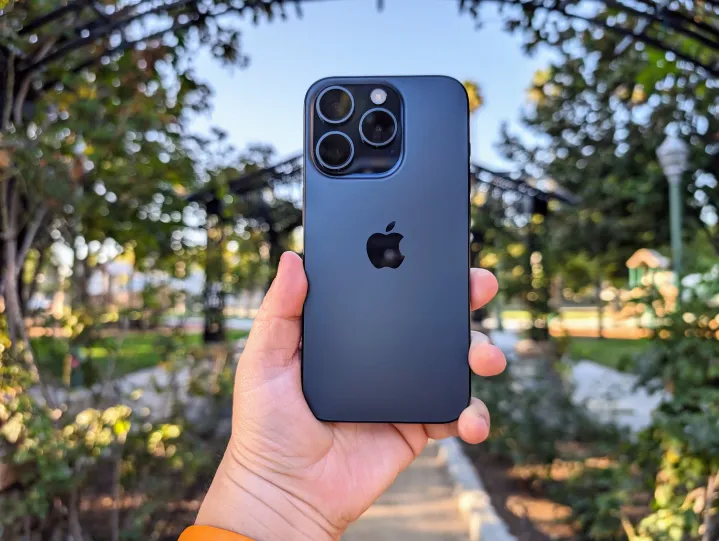
Stylistic changes aside, the other huge news this year is that the iPhone 15 and iPhone 15 Pro have ditched Apple’s proprietary Lightning port and embraced USB-C. The port remains in the same place on the bottom of the iPhone, and it’s similar enough on the outside to Lightning that you probably won’t notice the difference unless you look closely. Still, it’s a significant change in providing more universal charging compatibility, leaving you with one less cable to carry around.
As usual, Apple’s 2023 iPhone models offer IP68 water resistance and Apple’s Ceramic Shield glass on the front. The titanium frame of the iPhone 15 Pro theoretically adds a bit of extra durability over the aluminum iPhone 15, but that’s likely negligible, considering that the back is still glass and the internal frame is made of aluminum. Apple also only uses Ceramic Shield on the front glass; it doesn’t say what the back is made of on either the iPhone 15 or iPhone 15 Pro.
Since the iPhone 15 and iPhone 15 Pro are equally durable with unique design touches that come down to personal preference, we’re calling this one a tie.
Winner: Tie
iPhone 15 vs. iPhone 15 Pro: screen
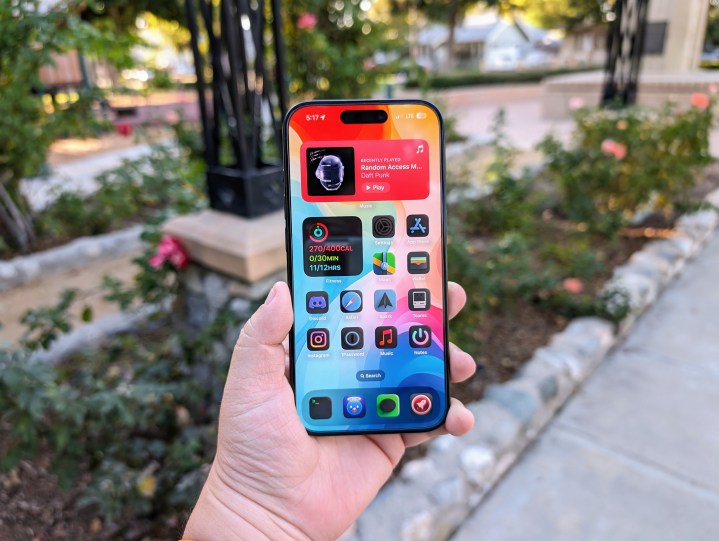
The iPhone 15 sports mostly the same Super Retina XDR display as last year’s iPhone 14, with two significant upgrades. Firstly, Apple has brought the Dynamic Island from the iPhone 14 Pro to the standard iPhone 15. Secondly, it’s doubled the brightness, so the iPhone 15 now reaches 1,600 nits of peak HDR brightness and 2,000 nits of outdoor brightness.
That puts it on par with the iPhone 15 Pro for brightness and marks the first time a standard iPhone has offered a screen as bright as its pro counterpart. With the addition of the Dynamic Island to the iPhone 15, both models now have the same resolution and pixel density: 2556 x 1179 at 460 pixels per inch (ppi).
While those are nice enhancements for the iPhone 15 over its predecessor, it still doesn’t do much to close the gap with the iPhone 15 Pro. The iPhone 15 still uses a fixed-refresh 60Hz screen and lacks an always-on display. It’s basically a brighter version of last year’s screen with a Dynamic Island instead of a notch.
Meanwhile, the iPhone 15 Pro doesn’t appear to have moved the needle in its screen technology. It’s the same adaptive 120Hz ProMotion display with always-on display support used in last year’s iPhone 14 Pro. Of course, there’s no need to argue with success; it was a great display then and still is now. You still have a 6.1-inch Super Retina XDR OLED display with a 2556 x 1179 pixel resolution at 460 pixels per inch (ppi) density.
While the iPhone 15 has made some nice improvements, a 60Hz display is disappointing for a smartphone in this price range. The iPhone 15 Pro still handily comes out on top here with its always-on ProMotion display.
Winner: iPhone 15 Pro
iPhone 15 vs. iPhone 15 Pro: performance and battery
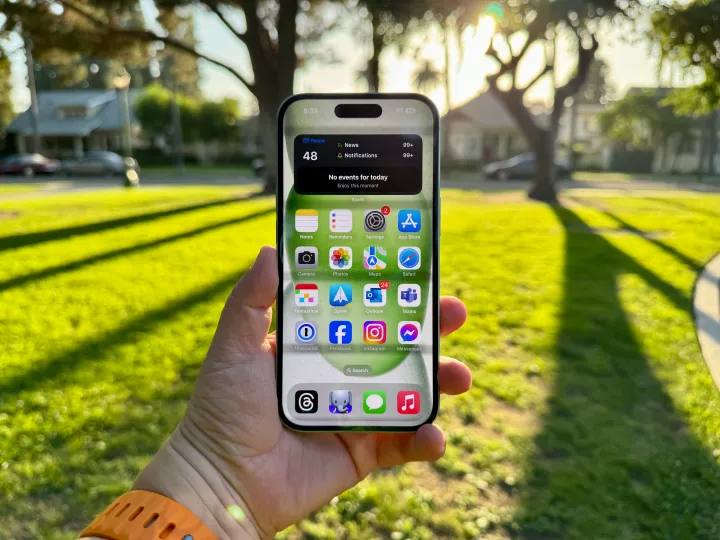
Last year, Apple made the surprising move of holding back its standard iPhone 14 models with the A15 chip from the iPhone 13 Pro, and now it’s proving that wasn’t a one-off decision. This year, the iPhone 15 uses Apple’s A16 Bionic chip — the same chip we’ve seen in the iPhone 14 Pro for the past year.
That’s not a bad thing, mind you. The A16 Bionic is a ridiculously powerful chip with a new image signal processor and Neural Engine that will undoubtedly help the iPhone 15 take better pictures, handle more complex AI tasks, and run more demanding games.
Still, it doesn’t hold a candle to what Apple has packed into the iPhone 15 Pro. This year’s next-generation A17 chip is such an advancement that Apple has dropped the “Bionic” moniker that it’s used since 2018’s A11, dubbing this new chip the “A17 Pro.”

While the architecture is roughly the same — two high-performance CPU cores and four high-efficiency CPU cores joined by a 16-core Neural Engine — the A17 Pro gets a 6-core GPU that Apple says is the biggest redesign it’s ever done to an Apple GPU. This includes an Apple-designed shader architecture, 20% peak performance improvements, hardware-accelerated ray tracing, and Metal effect upscaling that uses the GPU and Neural Engine in tandem to produce high-quality graphics.
Apple’s goal here is to turn the iPhone 15 Pro into a gaming powerhouse, and it’s already got developers on board preparing to release actual console games for the iPhone 15 Pro, including Resident Evil Village, The Division Resurgence, and Ubisoft’s Assassin’s Creed Mirage.
The battery life of the iPhone 15 and iPhone 15 Pro hasn’t seen any significant improvement. The iPhone 15 has a battery capacity of 3,349mAh, which is only slightly better than its predecessor’s 3,279mAh. Unfortunately, this still means that the phone needs to be charged every day. The iPhone 15 Pro has a slightly larger battery at 3,274mAh compared to the previous model’s 3,200mAh. However, it doesn’t seem to offer any noticeable improvement in terms of battery life.
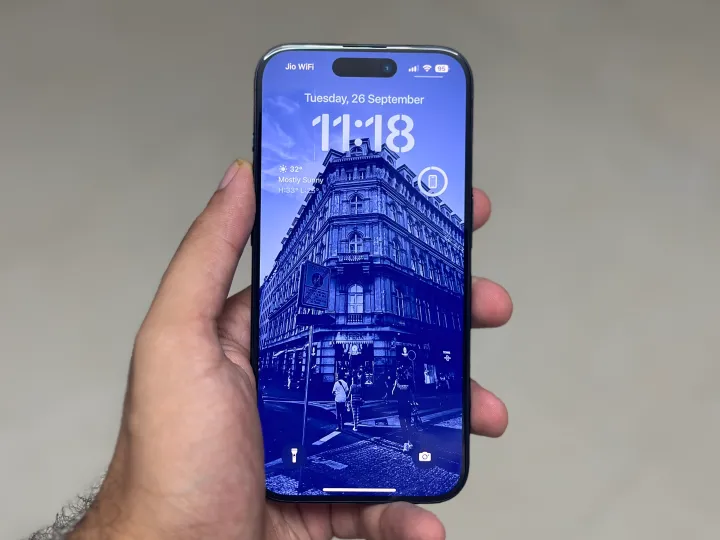
Charging speeds also remain the same, likely in the 20-27W range, but at least you can now do so using a pure USB-C cable. Wireless charging is also still limited to 7.5 watts using a standard Qi charger, with 15W available via an Apple-certified MagSafe charger. However, this year’s new Qi2 chargers that support the Magnetic Power Profile (MPP) can also deliver 15W speeds to an iPhone 15 or iPhone 15 Pro.
While we have no doubt the A16 Bionic chip in the iPhone 15 will deliver excellent performance for almost everyone, the A17 Pro takes things up a huge notch, especially if you want to be one of the first to play the console version of Assassin’s Creed on a smartphone.
Winner: iPhone 15 Pro
iPhone 15 vs. iPhone 15 Pro: cameras
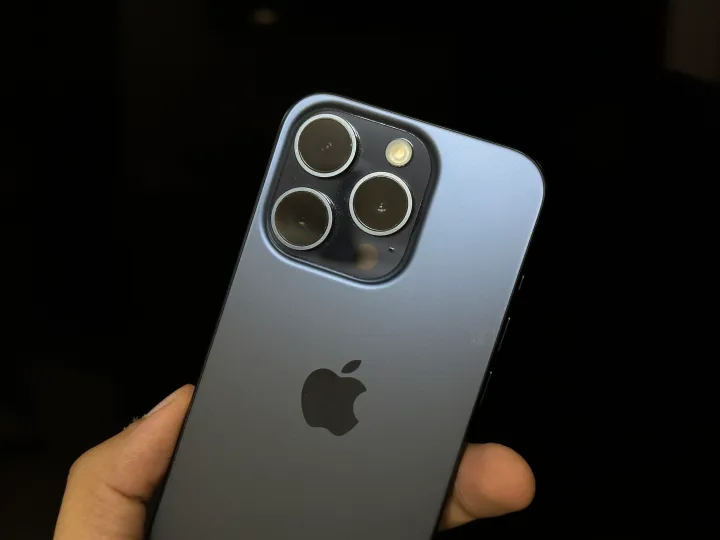
The most distinguishing feature of Apple’s iPhone Pro models has always been their better camera systems. While that hasn’t changed this year, the standard iPhone 15 has gotten some nice improvements that help close the gap in an unprecedented way.
While the iPhone 15 Pro cameras have remained largely unchanged from their predecessors other than the usual year-over-year sensor improvements, the iPhone 15 has taken an enormous leap — the biggest one we’ve seen since the iPhone 11.
The iPhone 15 gains a 48-megapixel (MP) sensor for the main (wide) camera, which not only offers the ability to take higher-resolution photos but also adds a 2x optical zoom to the standard iPhone for the first time. As with the 48MP sensor on last year’s iPhone 14 Pro, the iPhone 15 will use the center pixels on the 48MP sensor to produce a 12MP 2x shot. This effectively gives the iPhone 15 a third telephoto lens and three optical zoom factors — 0.5x, 1x, and 2x.
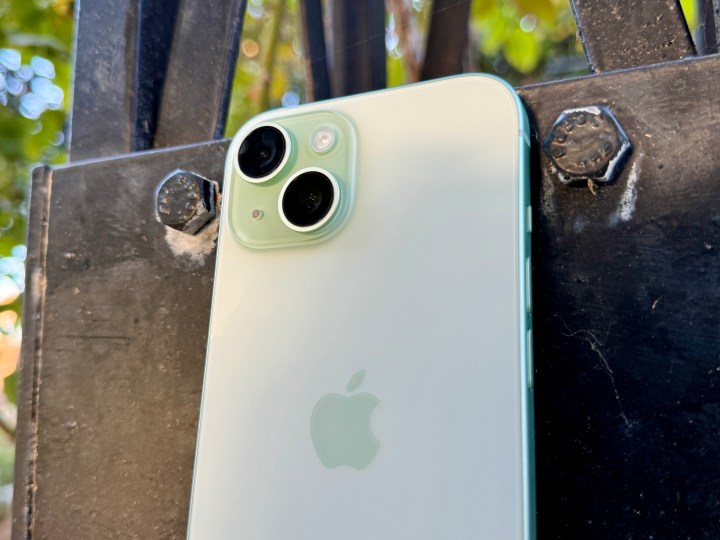
The new 2x mode also unlocks a whole set of other things that weren’t possible on the standard iPhone models before now, including improved Portrait mode photography, continuous zoom in 4K Cinematic mode, and the post-capture Focus and Depth mode controls that have long been exclusive to the iPhone Pro.
The iPhone 15 Pro retains its predecessor’s 48MP main camera resolution with a larger sensor and a new nanoscale coating on the glass to help reduce lens flare. The telephoto lens remains at the same 3x as the iPhone 14 Pro; only the 6.7-inch iPhone 15 Pro Max received an optical zoom upgrade this year. The iPhone 15 Pro also has a lidar scanner that allows for night mode portraits and faster focus in low light, plus an adaptive True Tone flash, macro photography and video recordings, and support for advanced formats like ProRAW and ProRes.
The iPhone 15 and iPhone 15 Pro both now capture photos in a 24MP “super high resolution” by default, and 48MP capture is also available in the HEIC format, an upgrade from last year’s ProRAW-only 48MP mode. They also use the same Photonic Engine with Deep Fusion and new Smart HDR 5 algorithms or computational photo processing.
With three lenses and four optical zoom factors (0.5x/1x/2x/3x), the iPhone 15 Pro still handily wins this round, but the iPhone 15 is closer than we’ve ever seen it thanks to its new 48MP sensor and 2x optical zoom.
Winner: iPhone 15 Pro
iPhone 15 vs. iPhone 15 Pro: software and updates
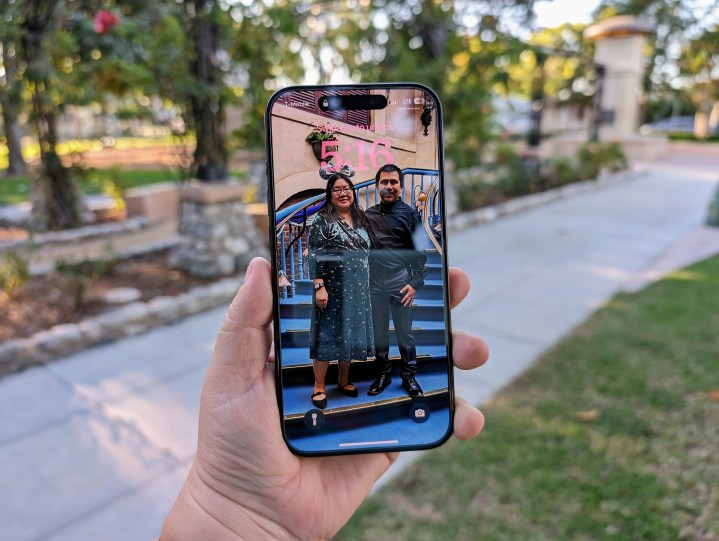
The iPhone 15 and iPhone 15 Pro ship with iOS 17, which will also be released as an update for older iPhone models on Monday, September 18, before this year’s iPhones even arrive in customer’s hands.
We don’t expect to see anything significant in iOS 17 exclusive to the iPhone 15 or iPhone 15 Pro except for those that are hardware-dependent, such as the new Action button on the iPhone 15 Pro. The iOS 17 release will also bring some of the newly announced iPhone 15 features, such as Roadside Assistance via Satellite, to the satellite-capable iPhone 14 lineup.
It’s also safe to say that the iPhone 15 and iPhone 15 Pro will be updated in tandem for at least the next four to five years. Apple doesn’t make specific upgrade promises like some Android handset makers, but it doesn’t need to, as its track record speaks for itself. There’s an excellent chance the iPhone 15 models will someday be able to run iOS 22.
Winner: Tie
iPhone 15 vs. iPhone 15 Pro: special features
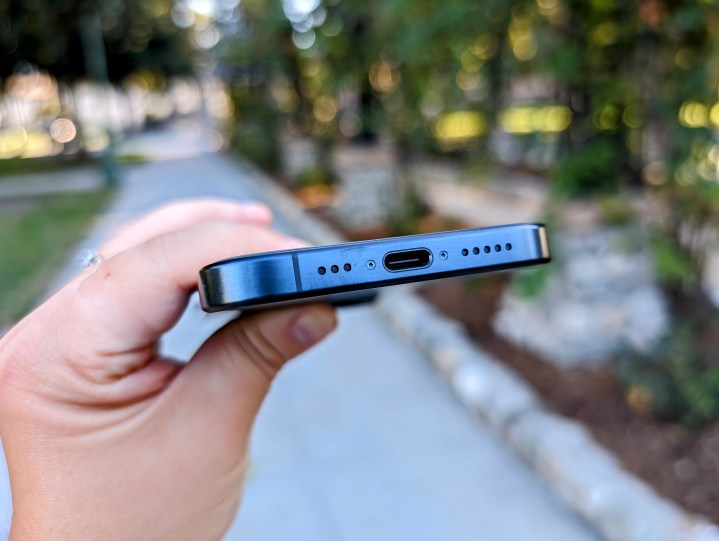
While it’s hard to call it a “special feature” at this point, it’s significant that Apple has switched to USB-C across its entire iPhone 15 lineup. However, that also comes with a slightly disappointing twist.
While the iPhone 15 and iPhone 15 Pro both have a standard USB-C port for charging, only the iPhone 15 Pro will support faster data transfer speeds. The iPhone 15 USB-C port remains capped at the same 480Mbps USB 2.0 speeds as the Lightning port. By comparison, the iPhone 15 Pro supports USB 3.1 Gen 2, offering data transfers of up to 10Gbps — as long as you provide your own USB 3 cable.
That’s understandable for a device that can capture huge ProRAW photos and massive ProRes videos. A one-minute 4K ProRes video at 30 frames per second (fps)can easily run up to 5GB, and anybody who had to deal with that on older iPhone Pro models knows what a pain those were to transfer over the 480Mbps Lightning port. With the 10Gbps USB-C port, Apple is also unlocking 4K/60fps ProRes recording to external storage drives.
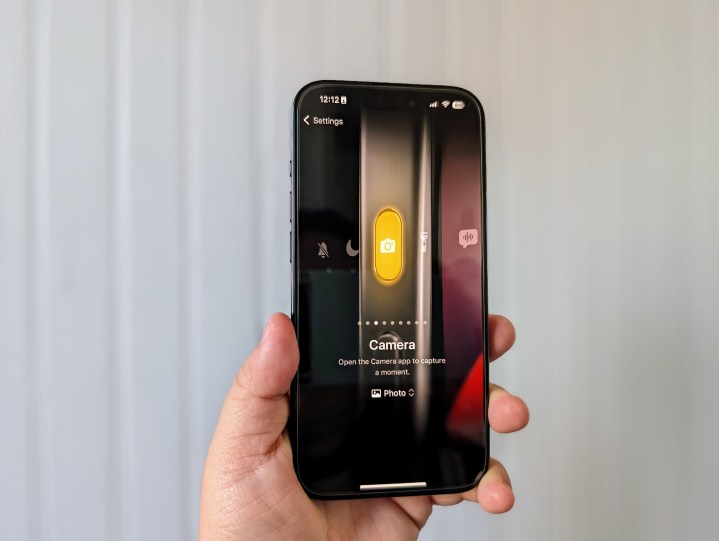
The iPhone 15 Pro gains a couple of other perks over the iPhone 15, including a new Action button that replaces the iconic ring/silent switch. While this will still toggle ring/silent mode by default, it can be customized to do nearly anything else you can think of, thanks to its ability to launch customized routines in Apple’s Shortcuts app. Later this year, the iPhone 15 Pro will also gain the ability to capture Spatial Videos that can be played on Apple’s new Vision Pro headset when it launches next year.
The iPhone 15 and iPhone 15 Pro both have a new second-generation Ultra Wideband chip that can connect with another device up to three times farther away. This will enable a new precision finding feature to help guide you to friends or family members in a busy marketplace, stadium, or mall, much like finding an AirTag works now.
With an Action button and faster USB transfer speeds, the iPhone 15 Pro definitely has a few more things going for it than the standard iPhone 15.
Winner: iPhone 15 Pro
iPhone 15 vs. iPhone 15 Pro: price and availability
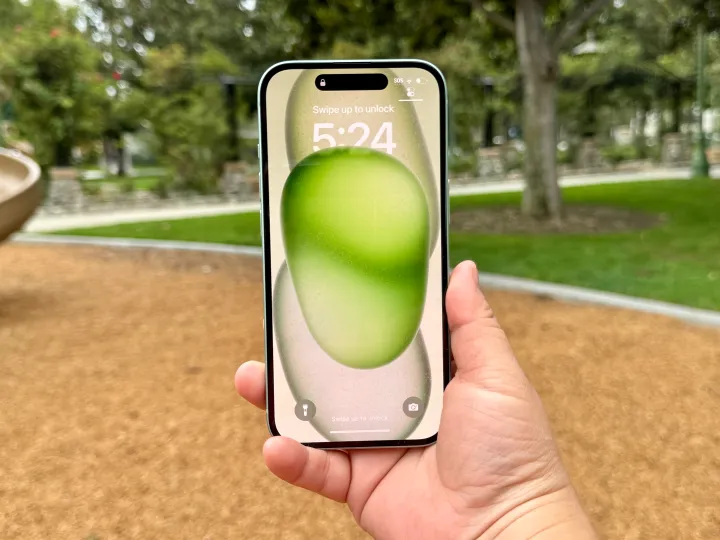
The iPhone 15 and iPhone 15 Pro are available for purchase right now. You can buy the phones directly from Apple and from most third-party retailers and carriers.
The iPhone 15 starts at $799 for the base 128GB model, with 256GB and 512GB versions available for $899 and $1,099, respectively. It’s available in Blue, Pink, Green, Yellow, and Black.
The iPhone 15 Pro starts at $999 for 128GB, with 256GB, 512GB, and 1TB upgrades for $1,099, $1,299, and $1,499. Available colors are Natural Titanium, Blue Titanium, White Titanium, and Black Titanium.
Overall winner: iPhone 15 Pro

In many ways, the iPhone 15 is much closer to the iPhone 15 Pro this year. That’s especially true in the camera department, where you now get a 2x optical zoom and all the features it unlocks. As a result, we think many folks will be delighted with the iPhone 15, and it’s still the best iPhone for most people.
However, the iPhone 15 Pro remains the superior phone for power users. With its more advanced camera system, insanely powerful new A17 Pro chip, and superior 120Hz screen, it’s the best choice by far for serious photography enthusiasts and gamers — and the only reasonable pick for professional photographers and videographers.
Editors’ Recommendations

